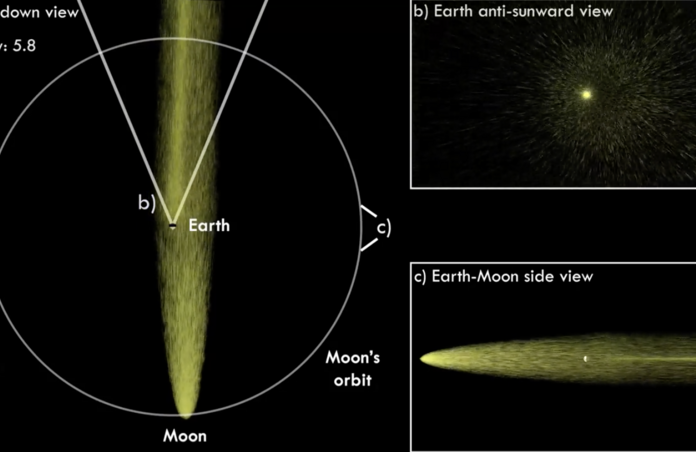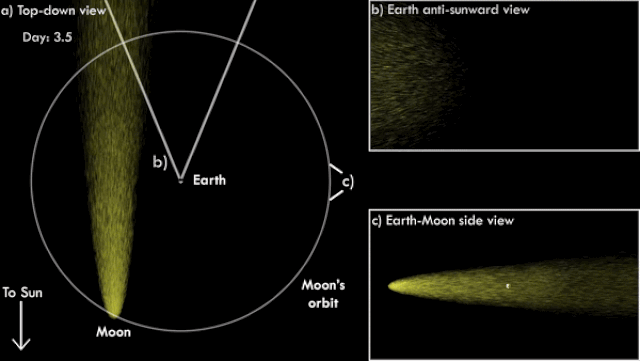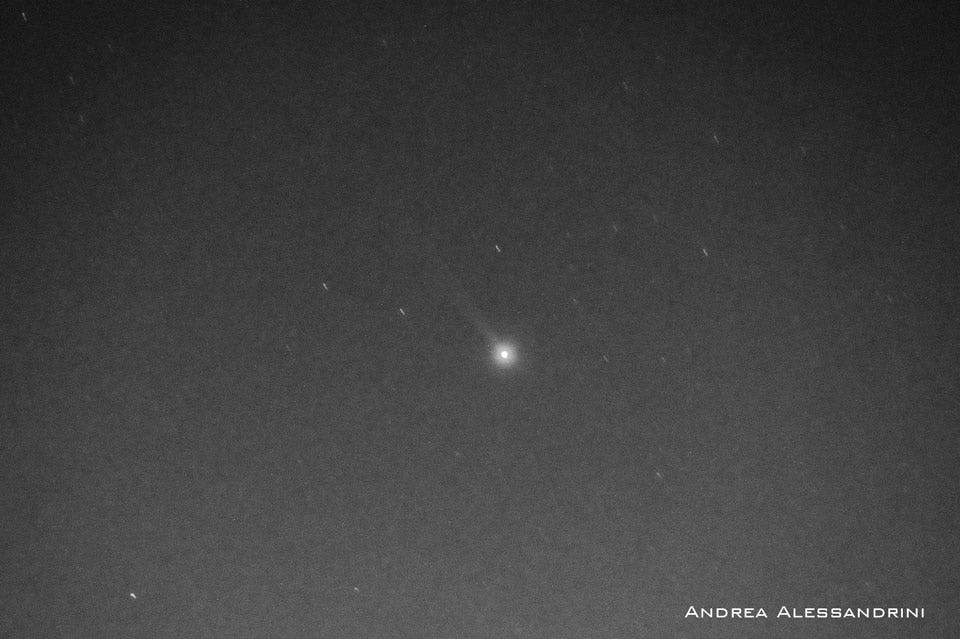The Comet-Like Tail of the Moon

While it has been known for decades that there is a stream of sodium atoms flowing from the Moon, recent conclusions drawn from long-term monitoring reveal the importance of sporadic meteors on the occurrence.
Back in 1998, Boston University astronomers discovered by chance the presence of sodium in the sky while attempting to photograph the Leonid meteor shower. Once theories like a passing comet, solar system dust or even instrument failure were excluded, it was suggested that the sodium emission might be provoked by the Moon. Repeated observations of the sky during New Moons lead to the conclusion that there must be a beam of sodium coming from the Moon, much like a comet tail.
It is not unsurprising that the initial discovery was made during a meteor shower: the stream of sodium atoms from the lunar surface is caused by micrometeors, which daily strike our natural satellite. Due to the quasi-inexistent atmosphere, tiny space rocks don’t get “burned” as they are with the Earth’s atmosphere, thus whirling up dust when the reach the Moon’s surface. To explain why it is only Sodium that is observed in this “tail”, although at the lunar surface sodium oxide makes up for only 0.6% of the elemental composition, we also have to consider photons from the Sun and solar wind, which is a stream of charged electrons, protons and some ions. These desorb sodium atoms, i.e. they “detach” them from the regolith, the dust that covers the lunar surface.

Then, the lower gravitational attraction that the Moon exerts allows for objects to leave its surface much more easily. What’s more, it’s solar radiation that pushes these atoms in the direction opposite of the Sun; they cover the Earth-Moon distance in about two days. During New Moon, the phase of the Moon when it is between the Sun and Earth, another phenomenon happens, which enabled the detection: the beam of sodium atoms gets focused by Earth’s gravity. As you can see from the GIF image below, this only lasts for about 3 days before the beam goes back to lengthen in space.

The sodium tail has been monitored from the El Leoncito Observatory (CASLEO) in Argentina since 2006 to understand whether there is variability in the brightness of the tail and if so what causes it. As mentioned before, meteor showers intensify the vaporizing of regolith dust. Another reason for higher intensity is that the Moon’s elliptical orbit may come slightly closer to Earth than during an average month. In the latest study, a third pattern was discovered, that has to do with meteors again. A higher rate of sporadic (“random”) meteors on Earth implies a higher rate of sporadic meteors reaching Earth, and the authors of the study indicate that these are larger and faster than shower meteors, thus displacing larger amounts of sodium. So much so that these sporadic events have a higher influence on the brightness of the sodium tail than the above two factors.

The Moon isn’t the only Solar System object that has a sodium tail: Mercury’s is formed through similar processes of photon and solar wind desorbing, albeit occurring in its atmosphere. The yellow-orange emissions can more easily be observed than the very faint lunar ones.
Cover Image: Model sodium tail, J. Wilson
Image Credits:
1 - First Footprint, NASA
2 - Tail Animation, J. O'Donoghue
3 - Mercury Tail, A. Alessandrini
